The pace of life of a modern woman constantly dictates her own rules, and therefore pregnancy planning is a very important and pressing issue for every representative of the fair sex. Today, choosing among the contraceptive methods available on the pharmacological market is not difficult. There is everything here: condoms, barrier spermicides, and intrauterine devices, but the most popular and sought-after remedy is the oral contraceptive.
Pros and cons of hormonal contraceptive drugs
A convenient form of use, protection from unplanned pregnancy, the ability to relax and have fun are some of the few advantages of hormonal drugs. Meanwhile, a number of advantages of oral contraceptives are accompanied by an impressive number of side effects, which often do not allow a woman to lead a full sexual life. For example, acne popping up from birth control pills is a common occurrence. What to do in case of such a reaction of the body, how to deal with rashes?
Protecting your body from the consequences of taking hormonal drugs is not as difficult as it might seem at first glance. Before using oral contraception, it is important to carefully read the instructions for the drug you are using. But even if the list of side effects contains a manufacturer’s mention of the possibility of acne, you should not immediately refuse birth control pills.
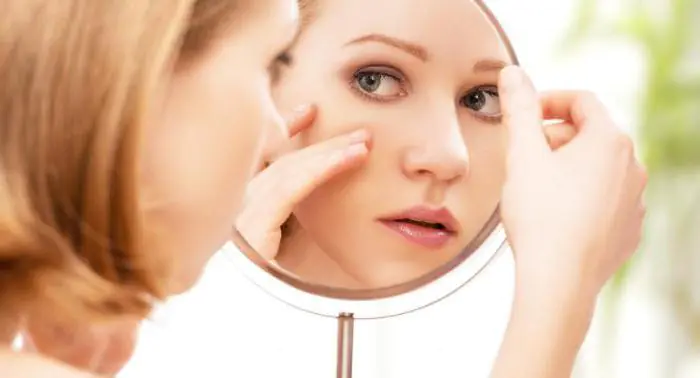
What side effects can there be from birth control pills?
If, after the period of adaptation, no changes for the better have occurred, or, on the contrary, the situation has worsened significantly, it is worth taking more active actions. An indisputable indicator that an alternative to the drug used should be found is not only acne. Birth control pills that are not suitable for a woman’s individual needs can cause serious problems in the functioning of the body. Indisputable signs signaling this include:
- the appearance of bleeding not associated with menstruation after three months of addiction to the drug;
- regular headaches and dizziness;
- the severity of symptoms of candidiasis, which does not decrease even after treatment with antifungal drugs;
- swelling of the limbs;
- metabolic disorders;
- decreased libido or complete lack of sexual desire;
- vaginal dryness;
- intense hair loss.
Unfortunately, not a single highly qualified gynecologist with many years of experience can accurately select the contraceptive pills that are suitable for a particular patient. Acne after a certain period of use can only tell a specialist whether it is advisable to continue prescribing the drug to a woman.
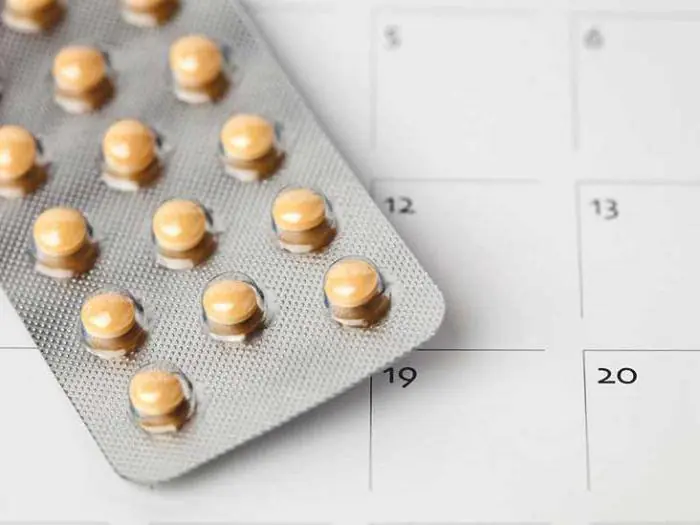
In addition, the possibility of individual intolerance to individual components of the drug cannot be excluded. Pimples can be the same symptom of an allergic reaction as hives, skin hyperemia, itching or swelling, and therefore cannot be ignored. To confirm intolerance to the drug, doctors recommend taking a blood test, which will show whether the patient produces antibodies to allergens in the required quantity.
Why do acne appear after stopping birth control?
Side effects of an oral contraceptive are possible not only during its use. Acne after stopping birth control pills is a fairly common problem. When a woman starts taking pills, the body needs time to get used to their effects, and the process of drug withdrawal is similar: it does not always go unnoticed for the female body.
In order to restore normal hormonal levels as quickly as possible, the patient should not abruptly end the course. Many girls complain: “I stopped taking birth control pills - acne appeared.” In fact, this happens due to a sudden deficiency of hormones that have become habitual to the body. Along with rashes, other unpleasant signs often appear:
- greasy shine;
- enlarged skin pores;
- black dots;
- pustules and acne.
How to get rid of acne after hormonal contraceptives?
Acne from birth control pills is treated in various ways, but before you begin to eliminate the external defect, you should consult with a specialist about the further use of the hormonal drug. Otherwise, therapy may not bring the expected result.
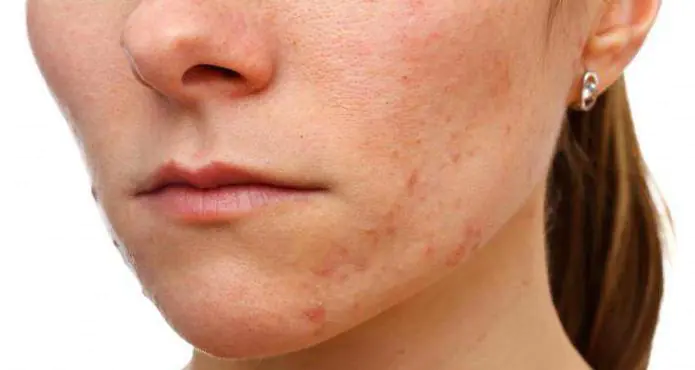
- laser exposure to the skin;
- peeling;
- mechanical cleaning of the epidermis.
Home remedies for acne and skin problems
At the same time, professional cosmetic formulations are recommended for the treatment of acne. Simple home remedies can be a more affordable alternative. By the way, most of them are suitable for regular skin care. For example:
- Tar soap. Produces a drying effect, has disinfectant properties, relieves inflammation and eliminates excess sebum. It must be used twice a day, foaming on the face, and then rinsed off with warm water.
- Tea tree oil. A natural antimicrobial agent helps relieve redness, speed up the launch of regeneration processes, and prevent infection. Before use, the oil is diluted with water in equal proportions and applied to problem areas 2-3 times throughout the day using a cotton sponge.
- Agave. Aloe juice has a natural antibacterial effect, relieves itching and helps tighten pores. To treat acne from birth control pills, it is necessary to spread the freshly prepared pulp of the plant onto the inflamed areas, leaving them for 10-15 minutes to act.
- Calendula. Regardless of the method of application, calendula tincture effectively copes with skin defects. It can be applied pointwise, which is especially convenient for single rashes, or zoned - when treating large affected areas of the skin.
Tips for using oral contraceptives
Not every woman who abruptly stopped taking birth control pills developed acne. After discontinuation of hormonal medications, the appearance of rashes can be avoided by following simple recommendations.
Firstly, you should not buy oral contraceptives without consulting your doctor. Only a gynecologist, based on the results of the examination and tests of an individual patient, can choose the right remedy. You should not run to the pharmacy after television advertising or advice from friends: a drug that suits one woman may not always suit another.
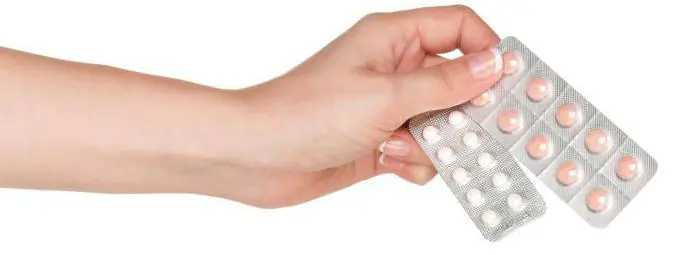
Secondly, experts advise taking breaks from using hormonal pills, replacing them with other methods of contraception. In this case, it is highly undesirable to suddenly stop taking the medication. Doctors consider the ideal scheme for stopping taking oral contraceptives to be: monthly reduce the dosage of the drug by a quarter. This will protect you from the side effects of hormonal changes.
The most popular birth control pills
To choose the right contraceptive pills, you need to take into account every detail, starting with the patient’s age, the presence of a regular sexual partner and the frequency of sexual intercourse. In addition, it matters whether the woman has given birth. Medicines that prevent unwanted pregnancy are classified by dosage. Microdosed ones are considered the most effective drugs - they are suitable for women of all ages. These include:
- "Janine."
- "Yarina."
- "Jess."
- "Midian."
"Janine" is a low-dose hormonal drug
“Janine” is a birth control pill that, according to reviews, causes acne extremely rarely. The medicine has a gentle effect on the female body on the principle of inhibiting the ovulation period. A distinctive feature of Janine pills is the presence of the hormone dienogest in their composition.
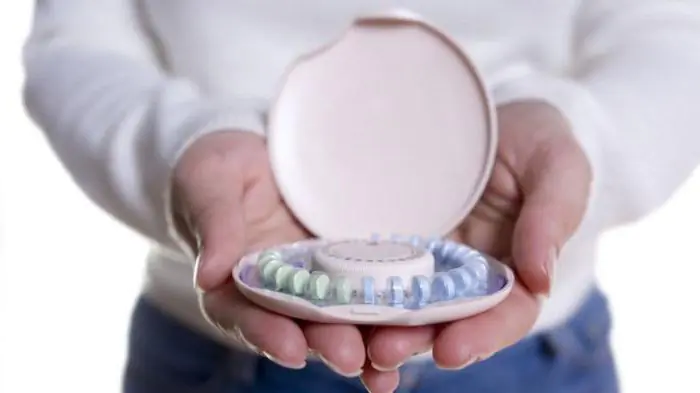
"Yarina" and "Jess"
An analogue of the drug "Zhanin" is the low-dose contraceptive pill "Yarina". This oral contraceptive will help get rid of pimples and acne. It is believed that it neutralizes the excessive effects of male hormones in a woman’s body. Birth control pills "Jess" have the same effect. Acne from them as a side effect appears as a result of individual intolerance to the synthetic gestagen drospirenone. Long-term use of the drug reduces the risk of developing cancer of the uterus, appendages, mammary glands, and prevents inflammatory processes in the reproductive system.
"Midiana": advantages of hormonal contraceptive
Another widely used remedy that deserves attention is Midiana (and not Median, as many women mistakenly call this remedy). It is also used to protect against conception and to improve skin condition. At the same time, the drug helps to correct the menstrual cycle and eliminates dysmenorrhea.
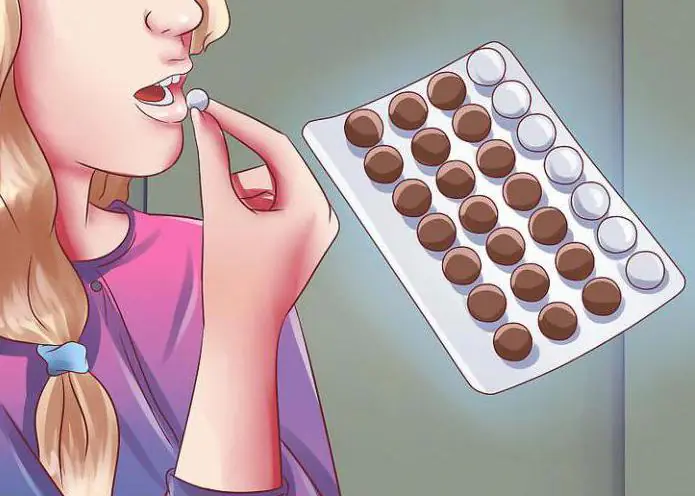
Diagnosis before prescribing birth control pills
It is impossible to reliably avoid the occurrence of pimples and acne after using hormonal contraceptives. No one can know how the body will react to a particular drug. However, every woman can protect herself by first going through some diagnostic procedures. Before purchasing birth control pills, it is advisable to:
- come for an examination to a gynecologist;
- conduct an ultrasound examination (to ensure the absence of neoplasms);
- pass general clinical blood and urine tests;
- take a smear for flora;
- visit a mammologist.
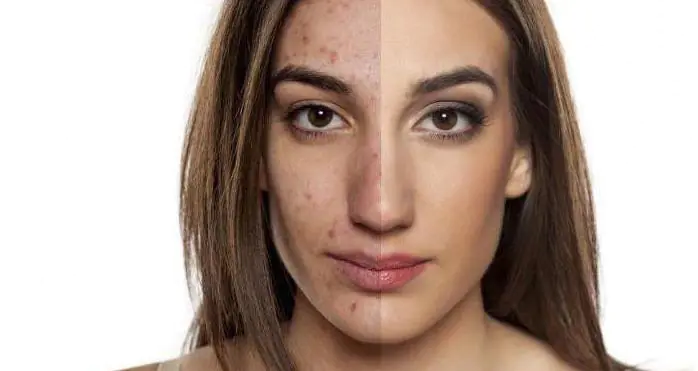
You should not keep silent from your doctor about your tendency to allergies, the presence of chronic cardiovascular or peptic ulcer diseases. When using prescribed birth control pills, it is extremely important to follow the recommendations of a specialist. Often, side effects in the form of skin rashes are the result of the patient ignoring the basic rules of administration (violations of the treatment regimen, decreasing or increasing the dosage, etc.).
Are you here
The last century was marked by a number of extremely useful discoveries and inventions in various branches of science, including medicine. One of these inventions was the means to protect against unwanted pregnancy - contraceptives. Oral contraceptive pills, injections, hormonal intrauterine devices, vaginal suppositories, tampons and tablets - these and many other means allow a woman to avoid having to have an abortion or give birth to an unwanted child.
The choice of contraception for each woman is always purely individual and is decided by her and her gynecologist, based on many factors, but most women prefer oral contraceptives (OCs), that is, birth control pills. In this case, under the influence of hormones, pregnancy becomes impossible due to the fact that the egg does not mature and cannot be fertilized.
Why do acne occur after stopping OK?
It happens that a woman using oral contraceptives comes to the idea of stopping this method of birth control in order to avoid future problems with pregnancy. Concern about long-term use of hormonal contraceptives is understandable, since after stopping OCs the body needs some time to recover. However, you shouldn’t suddenly stop taking the pills either. Many girls and women have no idea what adverse consequences for the body can result from the sudden abolition of oral contraceptives.
Against the background of abrupt cessation of taking OCs, headaches, nausea, depression, depression and excessive hair growth in various parts of the body may occur. Many girls complain about the deterioration of their skin condition: as a result of increased sebum production, pimples, blackheads, blackheads and age spots appear.
The reason for acne after stopping OCs lies in the fact that the body stops receiving its usual hormones and, as a result of hormonal imbalance, is exposed to stress. The reaction to stress is precisely oily shine, increased greasiness of the skin, as well as acne and other rashes.
Skin care after withdrawal from OK
There are different ways to cure acne after stopping OCs, but before choosing any of them, it is recommended to consult a specialist. The doctor will suggest a suitable procedure: laser treatment, peelings or mechanical facial cleansing, and will also select suitable cosmetic or medicinal products for home use.
Home skin care plays an important role in the treatment of acne after discontinuation of OCs:
— will help dry the skin, disinfect inflammation and remove excess oil tar soap. Twice a day, thoroughly foaming soap is applied to problem areas of the face and body, and then washed off with warm water;
- spot application tea tree oil directly on the pimple, it dries out inflammation, has an antiseptic and antibacterial effect, relieves redness and accelerates the healing of damaged skin. The oil is diluted with water in equal proportions and applied to the rash 1-2 times a day;
— quickly eliminates inflamed and reddened pimples after stopping OK aloe juice, which has antibacterial, anti-inflammatory effects and accelerates tissue regeneration. To treat inflammation, freshly squeezed juice or a piece of fresh aloe pulp is applied to problem areas of the skin for a few minutes;
- an inexpensive and effective drying and disinfectant - calendula tincture. The product is either applied directly to pimples, or diluted with water and used as a lotion for wiping inflamed areas. The drug is usually used at night.
How to avoid problems
The following tips will help you prevent acne from appearing after stopping OC:
1. Do not purchase medications without consulting a gynecologist. Only a doctor can correctly select the appropriate OC based on test results and examination of each individual patient;
2. Once a year, after consulting with your doctor, take a break and replace hormonal pills with other methods of contraception;
3. If during long-term use of OCs there is a need to completely stop using them, then you should not suddenly stop taking them. Once a month, reduce the dose by a quarter, this way you will protect your body from sudden hormonal imbalance;
4.When stopping taking OK, finish the pack you started.
If acne does not go away within several months after stopping OCs, be sure to consult a gynecologist.
Acne is a multi-causal disease. The formation of acne is influenced by many factors. But, according to recent research, the leading theory for the occurrence of acne is hormonal.
At the end of the last century, endocrinologists noticed that acne suddenly regresses in patients who take birth control pills. Over the past 10 years, large-scale studies have been conducted to prove the relationship between hormonal levels and skin condition.
In 2011, specialists from the European Dermatological Forum issued unified recommendations for the treatment of acne, including the use of COCs (combined oral contraceptives).
What it is?
Birth control pills are the simplest and most convenient way to protect against unwanted fertilization. COCs contain synthetic hormones that block ovulation and prevent egg maturation.
Oral contraceptives also change the properties of mucus in the cervical canal of the cervix, making it thicker, which makes it difficult for sperm to pass through.
General information
Normally, sex hormones in the female body are synthesized by the adrenal glands, pituitary gland and ovaries. Depending on the phase of the menstrual cycle, the concentration of sex hormones also changes: progesterones, prostaglandins, estrogens and androgens.
Oral contraceptives contain synthetic analogs of sex hormones (GHs) and artificially equalize the balance of these active substances in the body.
Advantages
Advantages of COC:
- guarantee against unwanted fertilization, subject to regular use;
- balance hormonal levels, reduce the severity of symptoms of hyperandrogenism: acne, hair loss, hirsutism, irregular cycles, PMS;
- symptomatic and not prolonged, but act on the primary cause of acne;
- are used when planning pregnancy, as they solve the problem of androgenic amenorrhea, due to the high estrogen content.
Flaws
There are many myths and misconceptions surrounding hormonal contraception. The main source of “hormonal horror stories” is the negative experience of using high-dose drugs 30-40 years ago. New generation COCs are less likely to cause adverse reactions, although they still have a number of disadvantages.
Side effects of COCs:
- pronounced withdrawal syndrome - negative symptoms, including acne that actively recurs after discontinuation of contraceptives. Various manifestations of “withdrawal syndrome” occur in 75% of women;
- in 1 woman out of 100, dizziness, nausea, heaviness and swelling of the mammary glands, mood swings, depression, tearfulness, headaches and weight gain occur;
- in 1 woman out of 1000, diarrhea, stomach pain, decreased libido, urticaria, swelling and fluid retention occur;
- thromboembolic venous or arterial disorders occur in more than 25% of women. Patients who are predisposed to thrombosis are advised to avoid COCs or do a blood test every 3-4 months, and take blood thinners as recommended by a doctor;
- Long-term use of COCs leads to partial insulin resistance. It is recommended to periodically do a glucose tolerance test.
Video: Rashes and contraceptives
Do they help?
Normally, the female body is able to independently determine the required dose of hormones, but in the modern world, the norm is very rare.
According to statistics, more than 45% of women have pathological hormone levels associated with overproduction of androgens - male PG.
The mechanism of maturation of hormonal acne looks like this:
- the glands synthesize excess testosterone, the concentration of male sex hormones increases, and the concentration of female sex hormones decreases;
- androgynous-estrogen receptors are located in the skin, they react to MPG and begin to actively synthesize sebum;
- sebum cannot completely come out, gets stuck in the pores, forms sebaceous plugs or comedones;
- the pore ducts begin to colonize propionic acid bacteria; the waste products of these bacteria (pus) turn ordinary subcutaneous comedones into papules or “ulcers.”
Androgen receptors are located on the face (chin, forehead, wings of the nose), chest, and back. It is in these areas that acne is localized. Other organs are also sensitive to androgens.
General symptoms of an imbalanced PG:
- underdevelopment of the mammary glands;
- hirsutism, excess male pattern hair growth;
- oily, seborrheic skin, acne;
- oily scalp, hair loss, even male pattern baldness (at the back of the head);
- menstrual irregularities, amenorrhea, PMS;
- androgen-dependent obesity (localized on the shoulders, abdomen, legs and thighs remain relatively slender)
- infertility.
Contraceptives artificially equalize the concentration of hormones by daily delivering synthetic analogues of progesterone and estrogen. Therefore, they really help get rid of acne.
Types of birth control for acne
Birth control pills vary depending on the active ingredient, its concentration and dosage.
Globally, there are first, second, third and fourth generation drugs. The former were high-dose, the latter were micro-dose.
Depending on the concentration of hormones, COCs are divided into:
- high-dose (35 or more gestagens): Anteovin, Enovid, Non-ovlon;
- low-dose (up to 25-30 gestagen): Zhanin, Yarina, Diane-35, Marvelon;
- microdosed (from 20-25 gestagen): Jess, Logest, Lindinet 20, Mercylut, Novinet, Zoeli, Dimia, Klaira.
Combined
COCs are the most promising class of hormonal drugs. They contain a complex of synthetic substances with a hormone-like effect: gestagen and estrogen.
Progesterone analogues act as gestagenic ingredients: dienogest, nogmestrol, drospirenone, cyproterone acetate, desogestrel, gestaden.
Highly selective progestins have the most pronounced antiandrogenic effect: drospirenone and gestaden. But, almost all COCs can be used to reduce androgenic effects, since gestagen reduces the biogenic synthesis of testosterone.
Old generation gestagens – testosterone derivatives (linestrenol, levonorgestrel, desogestrel) are not recommended for use in women with hyperadrogenism; they stimulate the synthesis of male PGs and provide an anti-estroegne effect. COCs with these gestagens are prescribed to patients with excess estrogen.
Estrogen component – ethinyl estradiol. Some new COCs contain a natural analogue of estradiol valerate (Qlaira).
How to quickly remove a subcutaneous pimple from your face? More details here.
Non-combined
Non-combined or mini-pills are tablets that contain only gestagen. They are prescribed to women with a healthy endocrine system solely for the purpose of protection.
Non-combined drugs do not treat acne and other manifestations of PG imbalance.
Trade names of the drugs: Exluton, Microlut, Ovrett, Primolut-Nor, Continuin.
Contraception for teenagers. Which ones are better?
Teenagers who begin to live an intimate life with one partner are prescribed non-combined contraceptives. They do not radically affect the unformed hormonal system.
For protection with unstable partners, it is better to use the barrier method.
Normally, by the age of 18-19, acne and other manifestations of hormonal imbalance sharply regress, since a natural, stable balance is still being formed.
If the skin remains problematic even after puberty, this is already a reason to go to the doctor and be checked for possible hyperandrogenism.
Which ones are better?
There are no universal “positive” drugs.
Tablets should be selected individually for each woman, based on the expected effect, age, lifestyle:
- Young women with normal hormonal balance, teenagers and people over 40 are better off taking microdosed OCs: Lindinet, Eoli, Qlaira or mini-pills. They have minimal side effects.
- Patients with polycystic disease and hyperadrogenism are prescribed low-dose combination drugs, preferably based on drospirenone, gestodene (Yarina, Jess, Dimia). They are optimal in terms of antiandrogenic effect/safety ratio.
The price of the drug does not play a key role. The differences in the cost of new generation COCs are less than 20%.
Which ones help in treating acne?
To correct hormonal disorders, only combined OCs are prescribed. The optimal tandem of synthetic hormones: ethinyl estradiol and drospirenone.
Drugs: Yarina, Velmari, Vidora Micro, Jess, Drospifem, Daira.
Yarina
Yarina is an extremely popular combined contraceptive with antiandrogenic action, low dosage.
Each tablet contains 3 mg drospirenone, 0.03 mg ethinyl estradiol. Yarina helps cure acne, as it corrects the level of PG in the body.
But it does not give a prolonged effect; it has a pronounced withdrawal syndrome. Gynecologists recommend that patients with stages 1-3 acne, without manifestations of hirsutism or infertility, abandon Yarina in favor of microdosed analogues: Lindinet-20, Jess.
Jess contains 3 mg of drospirenone, 0.02 mg of ethinyl estradiol in the form of betadex clathrate. This is the best option for correcting hormonal levels in young women.
Jess has a mild withdrawal syndrome. The severity of side effects depends on lifestyle, general health and compliance with instructions.
Diana-35
Diane-35 contains cyproterone acetate – 2.0 mg; ethinyl estradiol – 0.035 mg. Cyproterone has a 100% proven antiandrogenic effect, but the severity and severity of adverse reactions is much higher. Diane-35 is not recommended for young girls and women over 45 due to the frequency of adverse reactions.
Instructions for use
You should carefully study the instructions before starting to take the drug, compare potential side effects and the expected effect.
All COCs must be taken at the same time daily with a glass of water. Food intake does not affect the bioavailability of the drug.
In case of adverse reactions, you should consult a doctor.
All COCs are metabilized in the liver and excreted through the kidneys, so they are contraindicated in women with acute renal failure and impaired liver function.
What to do if they appear after cancellation
The withdrawal reaction is the most pressing problem in hormonal contraceptive therapy. They do not provide a prolonged effect, and relapses of acne may manifest as larger skin lesions than before treatment.
To avoid “withdrawal syndrome”, you need to follow these recommendations:
- ask the gynecologist or endocrinologist who prescribed hormonal therapy about the necessary tests and the schedule for taking them. The main ones are the level of glucose in the blood, the level of free testosterone, ultrasonographic examination of the ovaries to confirm or refute polycystic disease;
- together with a specialist, select the optimal, highly selective, micro-dosed drug;
- COCs must be taken for at least 9 months to see sustained therapeutic progress. But, taking contraceptives should not be continuous. Every year it is necessary to take breaks for 2-3 months to give the endocrine system the opportunity to “remember its responsibilities”;
- When using COC therapy, a low-carbohydrate diet is necessary, especially at the time of discontinuation. Testosterone enters its active form and increases the sensitivity of skin receptors after reacting with insulin. Therefore, a diet with a low glycemic index is necessary to “smooth out” relapses after stopping OC use;
- An endocrinologist can prescribe herbal estrogens for maintenance therapy: Saw palmetto extract, Black cohosh, Borovaya Uterus, Red Brush, Vitex, Evening Primrose oil, female molia vitamin complexes with zinc and vitamin E.
General recommendations
COCs are a common, and therefore well-studied and thoroughly researched class of drugs. They have a number of contraindications and side effects, but most of the “horror stories” associated with hormonal treatment are absurd.
To minimize side effects, tablets should be selected only after consultation with a gynecologist. Each woman should carefully consider the potential benefits and risks of a medication.
In the first months of taking COCs, it is useful to keep a diary, recording changes in well-being, progress in the treatment of acne.



